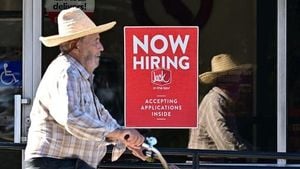Concerns are rising as bird flu cases increasingly affect pets across the United States, prompting some experts to declare this trend as indicative of a "silent pandemic," particularly among domestic cats. The H5N1 virus, notorious for its impact on birds, has now been reported in dogs and cats, leading to serious worries about its potential spread to other species, including humans.
According to reports from multiple sources, including Science, scientists have observed significant cases of bird flu among pets, especially cats, with New Jersey being identified as a hot spot for these infections. Experts urge immediate action to mitigate what they describe as the growing threat of H5N1, which has already caused considerable disruption due to its effects on livestock. Notably, the animal epidemic has led to egg rationing and heightened concerns about food supplies.
The H5N1 strain of bird flu has traditionally been associated with severe outbreaks among poultry and wild birds, but its recent mutation and spread among mammals have sparked alarm. The Friedrich-Loeffler-Institut has called for "immediate, nationwide measures" to address this viral infection, emphasizing the urgency as they warn, "Prepare for a potential H5N1 pandemic." This quote highlights the pressing nature of their findings, especially as several pets, particularly domestic cats, have succumbed to the virus after exposure to infected birds or contaminated food products.
The situation is compounded by the discovery of the virus in dairy cows, as confirmed by the U.S. Department of Agriculture. This background only adds weight to the warnings issued by public health agencies such as the Centers for Disease Control and Prevention (CDC), which tracks the virus's spread among both animals and humans. Although the risk for humans remains low, the CDC is closely monitoring cases of individuals who come in contact with infected animals. A marked rise has been observed among veterinary and agricultural workers who face heightened exposure risk.
Currently, the probability of human infection from sick domestic pets is considered low, according to the Robert Koch Institute (RKI). Despite this, public health threats have emerged, with one tragic incident reported where an elderly individual died from bird flu after contact with infected livestock. This isolated case does underline the importance of vigilance and preventive measures.
Interestingly, scientists now argue for more stringent pandemic preparedness strategies. The experts argue for accelerated development of vaccines capable of combatting H5N1 should it show increased transmission potential. Dr. Christoph Specht, commenting on this narrative, notes, "If it were to occur, it would be very dangerous and could lead to significantly higher mortality rates than COVID-19. This is the time to act and take proactive measures against possible outbreaks.” His remarks highlight the lethal nature of the virus, with estimates of fatalities potentially reaching 30 percent if widespread human-to-human transmission occurs.
Remove fear and misinformation, experts recommend immediate action—from public awareness campaigns to comprehensive vaccine development strategies. The growing burden of animal infection, coupled with human cases, has raised alarms, leading to the assertion: "The world must prepare for what could be the next pandemic." Indeed, the scientific community is calling for collaboration in crafting new vaccines and accelerating regulatory processes involved.
Public health authorities have reinforced their messaging as well, advising people to maintain hygiene practices and avoid direct contact with wild birds and infected animals. They also stress the value of thorough cooking methods for any animal products consumed. The sentiment is echoed by global health organizations as they reaffirm the importance of remaining cautious about the potential spillover of animal viruses to humans.
While many instances of infection among those working closely with livestock have been mild, experts remain vigilant and watchful. Existing vaccinations and immediate research initiatives are recommended as ways to prepare for any shifts within the viral patterns.
To summarize, as the H5N1 virus spreads among pets and livestock, scientists plead for aggressive measures to prepare for the potential threats it brings not only to animal health but also to human populations. Continuous monitoring and developmental efforts are required to stave off the impending pandemic risks associated with avian influenza viruses, especially during periods of increased transmission risk.
Given the potential severity of avian influenza infections among mammals, especially domesticated pets, citizens and authorities alike must take these warnings seriously. This insight from the current situation with H5N1 provides both caution and the call for readiness at all levels of society.
The intersection between animal agriculture, wildlife health, and public health creates complex challenges necessitating our immediate attention. This likely won't be the last we hear of H5N1, prompting the scientific community to unite against future threats. A vigilant and prepared response may be our best defense against what could develop from this silent pandemic.



